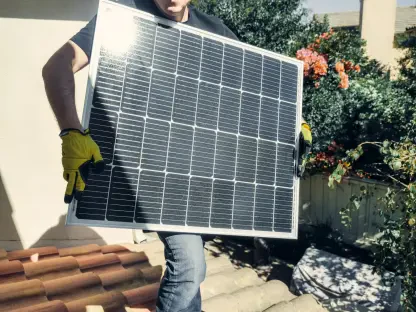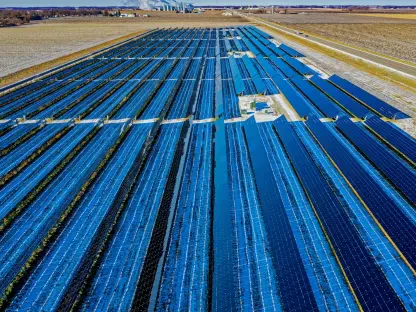Following years of significant energy challenges, Puerto Rico is experiencing a transformative shift towards renewable energy, notably solar power and battery storage systems. This shift presents both a solution and hope for an island that has faced dire energy infrastructure hardships exacerbated by catastrophic natural disasters over the years. As the demand for electricity hits its peak during the summer months, these advancements play a crucial role in alleviating energy shortfalls. The island’s strategic embrace of solar technology signals not only a modern revitalization of its power grid but also serves as a beacon for resilience and sustainability in regions vulnerable to climate impacts.
Innovative Energy Strategies for Resilience
Distributed Battery Solutions
A cornerstone of Puerto Rico’s approach to modernizing its energy grid involves leveraging distributed battery systems, referred to as “behind-the-meter virtual power plants.” This strategy marks a pivotal innovation in Latin America and the Caribbean, underscoring the island’s commitment to renewable energy technologies. Utilizing thousands of batteries, grid operators have effectively managed to balance energy supply, even amid peak demands and unexpected shortages. The adoption of these advanced systems signifies a critical step forward in enhancing energy resilience and autonomy, particularly when considering Puerto Rico’s historically fragile energy infrastructure.
Historical Perspective
The backdrop for Puerto Rico’s energy transition is set against the aftermath of Hurricanes Irma and Maria in 2017, which caused unprecedented devastation, leading to the longest blackout in U.S. history. These events intensified awareness and urgency regarding energy security, catalyzing a shift in public mindset toward dependable and sustainable solutions. Recognizing this need, the government enacted the Puerto Rico Energy Public Policy Act in 2019, which establishes a roadmap for a 100% renewable energy future by 2050. With interim benchmarks, this policy provides a structured pathway towards a pristine energy landscape, fostering hopes for an era marked by sustainability and security.
Navigating Peak Energy Demands
Emergency Measures During Summer Peaks
Anticipating potential power shortages during the hotter months, Puerto Rico’s Energy Bureau has implemented emergency extensions of the “customer battery energy sharing” program. This initiative empowers residents to contribute to energy stability by dispatching their stored battery power during critical shortages. LUMA Energy, the principal grid operator, has overseen the deployment of approximately 70,000 batteries, which have been pivotal in circumventing load shedding and fortifying the reliability of energy distribution across residential areas. This proactive approach not only prevents power outages but enhances the grid’s robustness, thereby reinforcing residents’ confidence in renewable solutions.
Role of Solar Companies
Noteworthy contributions toward the solar movement have come from companies such as Sunrun and Sunnova. These organizations have spearheaded innovations in financing models and leasing options, making solar energy more accessible by eliminating significant upfront costs. Customers can transition to solar power through structured monthly payments, comparable to traditional electricity charges, thus democratizing access to renewable technologies. This strategy has substantially increased the adoption rate of solar installations throughout Puerto Rican households. Sunrun, in particular, has exemplified extraordinary dedication by deploying over 37,000 home batteries, elevating its power dispatch capabilities notably beyond previous benchmarks.
Political and Economic Dynamics
Renewable Policy Advocacy
The renewable energy drive in Puerto Rico remains intricately linked with political endorsements and leadership decisions. Governor Jenniffer González Colón has emerged as a staunch advocate for preserving the net-metering system, which incentivizes solar energy by allowing residents to offset energy costs. Her efforts align with broader endeavors to maintain incentives for solar integration, despite initial support for natural gas production. The governor opposes adding fixed charges to the net-metering system, emphasizing her commitment to bolster solar adoption and ease the transition to sustainable energy sources.
Tensions with Traditional Energy Suppliers
Complicating Puerto Rico’s energy landscape further are disputes with traditional suppliers like the Puerto Rico Electric Power Authority, which aims to impose fixed charges that could deter solar adoption. Moreover, controversies surrounding LNG supplier New Fortress Energy illustrate tensions in reconciling traditional fossil fuel interests with emerging renewable priorities. These developments highlight a complex interplay between economic interests and sustainability imperatives. Resolving such conflicts holds significant implications for the future trajectory of Puerto Rico’s energy policies and partnerships.
Looking Ahead
Over the past few years, Puerto Rico has endured numerous energy challenges, prompting a significant shift toward renewable energy sources, especially solar power and battery storage systems. This transition is both a viable solution and a beacon of hope for the island, which has suffered due to inadequate energy infrastructure further strained by devastating natural disasters. The push for renewable energy has become critical as the demand for electricity peaks, particularly during the sweltering summer months. These innovative advancements are essential in addressing energy shortages and ensuring a stable supply. Puerto Rico’s strategic adoption of solar technology marks not only a revitalization of its aging power grid but also positions the island as a leader in resilience and sustainability, serving as an inspiring example for other regions vulnerable to climate change impacts. This move embodies a forward-thinking approach to energy, emphasizing clean, sustainable practices that cater to both immediate needs and long-term goals.









